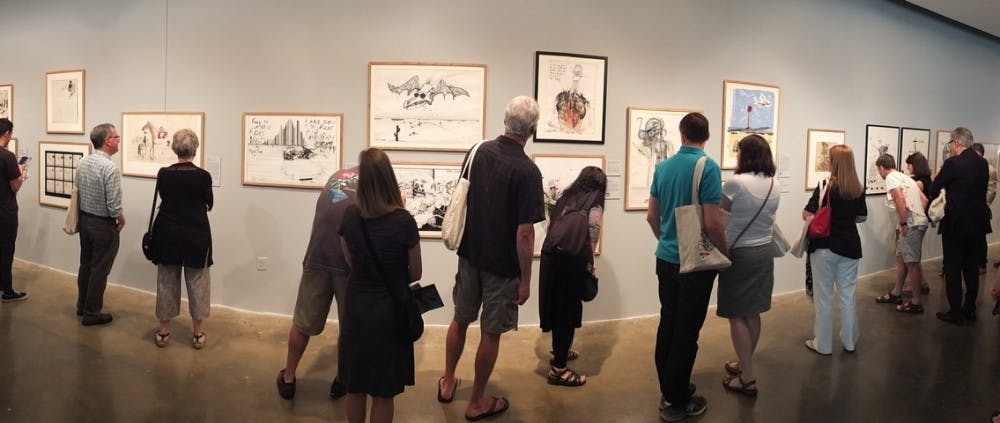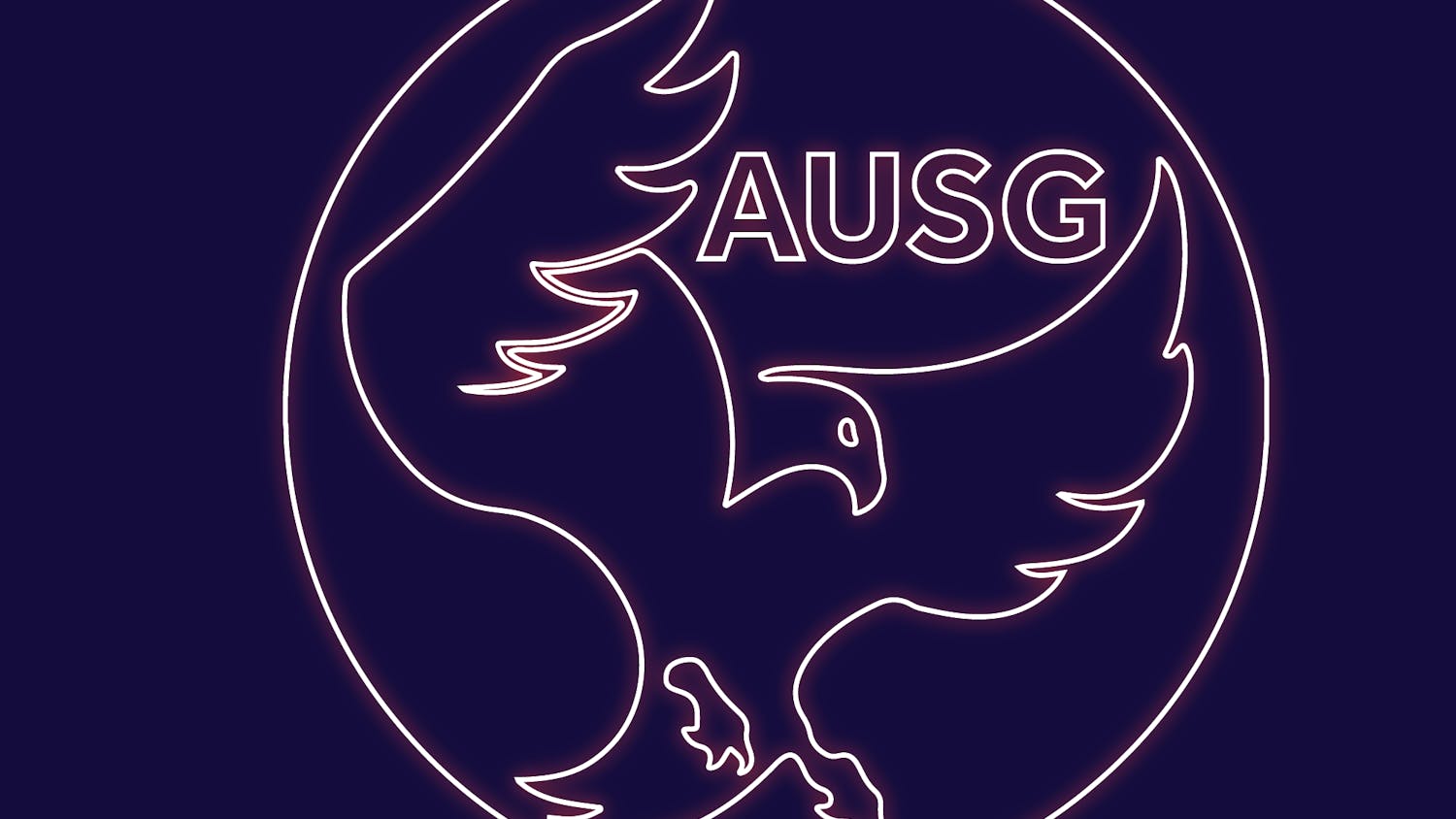On June 16, the American University Museum at the Katzen Arts Center opened its new presentation of “Ralph Steadman: A Retrospective,” the London Cartoon Museum’s traveling exhibition of over 100 original artworks from British illustrator Ralph Steadman. The exhibition manages to showcase Steadman’s most famous works while also introducing museum-goers to his lesser-known illustrations.
In a career that has spanned over 50 years, Steadman has published an impressively expansive oeuvre of surreal and unconventional illustrations. The exhibition showcases his breadth of style with lurid drawings of birds from his original children’s book “Nextinction,” washed-out landscapes of the wine country and the absurdist ink drawings which accompanied the works of Hunter S. Thompson, the founder of Gonzo journalism.
Jack Rasmussen, the curator and director of the museum, was eager to bring the exhibition to AU.
“It’s amazing because both young people and old people really are excited by it,” Rasmussen said.
Many museum-goers will likely be captivated by the work associated with Thompson. They can witness an artifact of Steadman’s first encounter with Thompson by observing an illustration from the pair’s first collaboration. “The Kentucky Derby is Decadent and Depraved,” often considered the first piece of Gonzo journalism, was an article written for Scanlan’s Monthly that critiqued the class division present at the horse race. The illustration on display at the AU Museum features well-dressed caricatures of wealthy attendees as they lead a horse to the starting line.
Thompson wrote from a first-person perspective in an attempt to give the reader an intimate and jarring portrayal of American life. In “Fear and Loathing in Las Vegas,” Thompson describes his drug-addled journey through Las Vegas. Upon first glance, the book can appear meaningless and self-gratifying, but ultimately, that’s what Thompson intended: to shine a light on the cruelty of the indulgent American experience.
Steadman tries to demystify some of Thompson’s motivations in “The Joke’s Over,” his memoir of his time with Thompson. In the memoir, Steadman wrote that “for all Hunter’s mindless self-indulgence, which is legendary and crude, he always impressed me with his blind, selfless urge to cut out the crony bestiality of modern society and political calumny that scarred that era.”
Observing Steadman’s illustrations, the viewer can see a similar criticism of bestiality. The illustrations he drew to accompany “Fear and Loathing” can be viscerally disturbing, as in “Lizard Lounge,” an ink drawing where human figures with animal heads sit at a bar as a lizard-looking man bloodily bites the neck of a bird-woman. The iconic cover of “Fear and Loathing” is also on display.
Rasmussen finds that Steadman’s illustrations achieve the same intimacy as Thompson’s journalism.
“This is kind of Gonzo illustration in that it’s not just illustrating a story in a nice way, but it’s his interpretation of that and creating something new and perhaps more insightful about the subject that he’s dealing with,” Rasmussen said.
When the viewer looks beyond the harsh imagery, there is plenty to interpret.
“I assumed that Steadman was a complete deranged wild man, and he’s not,” Rasmussen said. “He’s a consummate artist who has a way of sort of letting go and opening it up to accident and freedom but also outrage and humor at the same time.”
Steadman’s works are often outright political satire. “Reagan’s Latest Closeup” is a portrait of Ronald Reagan devilishly grinning as he stares down the Statue of Liberty..” Even though Steadman is mostly known for his work from the 1970s and 1980s, he continues illustrating to this day. In 2015, he drew “Donald Trump—Porky Pie!!” to critique the then-presidential candidate’s tendency to bend the truth.
If museum-goers are overwhelmed by Steadman’s work, they can always listen to what he has to say about his work by using the Audible phone app to listen to an audio tour of the exhibit.
But ultimately, viewers might heed Thompson’s own words when trying to interpret Steadman’s work. From “Fear and Loathing,” he writes, “Maybe it meant something. Maybe not, in the long run, but no explanation, no mix of words or music or memories can touch that sense of knowing that you were there and alive in that corner of time and the world. Whatever it meant.”
“Ralph Steadman: A Retrospective” will be on display at the American University Museum at the Katzen Arts Center until Aug. 12.





